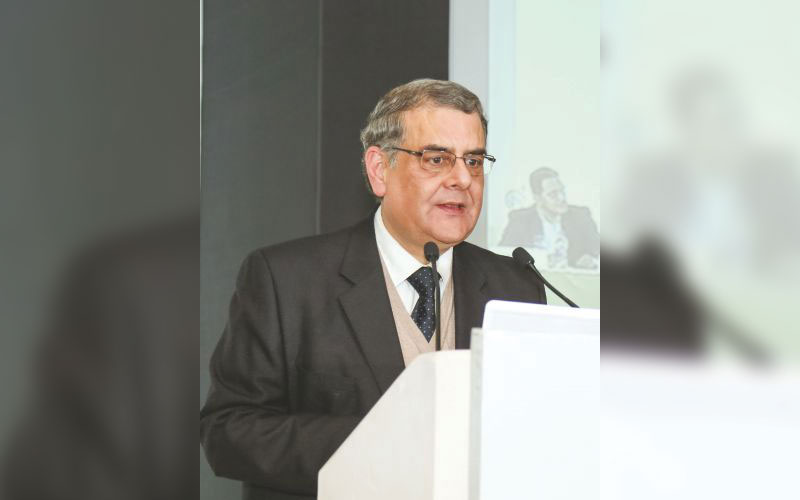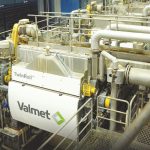Specific water consumption by the Paper Industry has come down significantly over the years. Earlier, the industry used to consume 200 cubic metres of water to produce a tonne of paper. Now, the integrated mills have reduced that to around 40 cubic metres. Several paper mills in the country have got the best available global technology in the field of wastewater treatment. However, technology upgradation continues to be a challenge across the board, especially for the smaller paper mills, Rohit Pandit, Secretary General of Indian Paper Manufacturers Association (IPMA), informs Paper Mart.

Paper Mart: How committed do you think the industry, in general, is in making the pulp and paper mills water efficient?
Rohit Pandit: The Paper Industry in India has been sincerely working on becoming ever more water efficient in a mission mode. What else can explain the achievement of targets in terms of water consumption that seemed impossible even till a few years ago. Specific water consumption by the Paper Industry has come down significantly over the years. Earlier, the industry used to consume 200 cubic metres of water to produce a tonne of paper. Now, the integrated mills have reduced that to around 40 cubic metres. There is a concerted effort to bring it down further. Actually, going forward, there is really no choice but to become progressively more and more water efficient. This is not only true for the Paper Industry, but for all industries.
PM: What initiatives or partnerships can help the industry achieve its water reduction target faster?
RP: For achieving water reduction targets, India’s Paper Industry has taken significant leaps in the last few years in terms of technological upgradation, adoption of clean and green technologies, introduction of best practices and employing a wide range of innovations.
For the last 15 years, Paper Industry has been running an iconic project called PaperTech. The project aimed at making the Paper Industry world class through sharing and wider acceptance of best practices for achieving water and energy efficiencies. Paper Industry players have been sincerely working on reducing the environmental footprint and also the resource intensity.
Watch: Top Paper Companies 2023
PM: What are the biggest challenges the pulp and paper industry faces in making the mills more water efficient?
RP: Several paper mills in the country have got the best available global technology in the field of wastewater treatment to be at par with the rest of the world. However, technology upgradation continues to be a challenge across the board, especially for the smaller paper mills.
Indian paper mills operate in a very challenging environment of high input and raw material costs and have to face intense competition in the domestic market from duty-free imports flooding into the country. In such a scenario, investing in high-cost water efficient technologies is a huge challenge for paper mills.
PM: What measures or intervention would you like to see in place so that the industry can become more water efficient?
RP: IPMA has reiterated its continued demand for government assistance in technology modernisation as available to several other industries. This is important since investments required in technology upgradation and capacity enhancement of pulp & paper mills are quite high.
The Paper Industry requires financial assistance from the government in the form of soft / interest-free loans for energy and water efficient and environment friendly technologies which will help the industry become competitive with better energy efficiency and environmental compliance and conservation of natural resources.
Also Read: Valmet’s Smart Solutions to Minimize Water Footprint
PM: As an industry body, what initiatives do you plan to undertake to help realize some of the goals?
RP: As an industry body, IPMA is actively collaborating with other stakeholders, including industry associations and government agencies, for facilitating deliberations and conclaves on the need for increasing water efficiencies. CII National Conference on Pulp & Paper organised by CII-Triveni Water Institute is one such conclave that IPMA actively supports.
PM: Where do you see the industry in water efficiency in five years?
RP: Water is a critical resource for the Paper Industry and efficient management of water will continue to underline the industry’s performance and its commitment towards overall sustainability. Accordingly, the industry is poised to move rapidly up the technology and sustainability curves matching with the world’s best. The soon-to-be notified stringent environmental norms / standards for effluent discharge, fresh water consumption and emissions will have to be complied with by paper mills, and this will lead to still higher water efficiency.
Indian paper mills operate in a very challenging environment of high input and raw material costs and have to face intense competition in the domestic market from duty-free imports flooding into the country. In such a scenario, investing in high-cost water efficient technologies is a huge challenge for paper mills.



